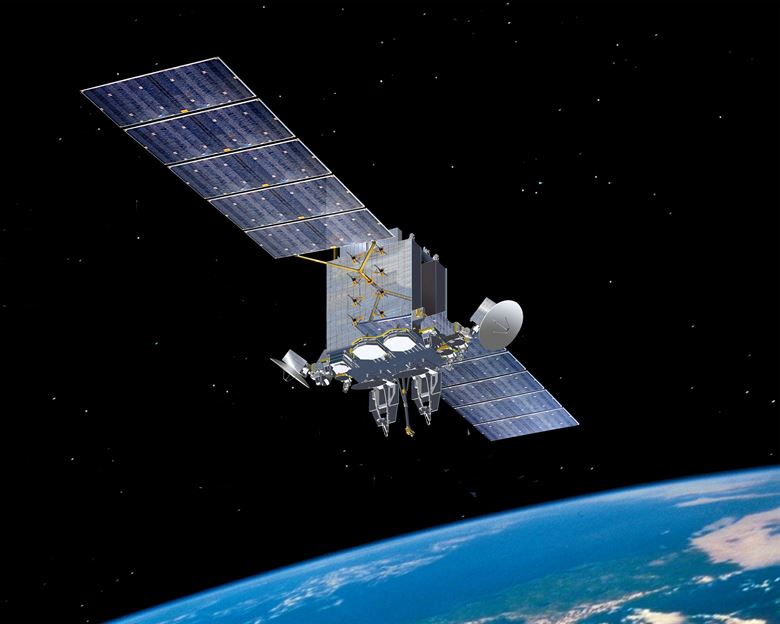
AEHF satellite for classified military communications
WASHINGTON: Space Force cuts to the Evolved Strategic SATCOM program raise the specter of a gap in the technologies that connect the president and top military leaders during a nuclear attack or other strategic challenge, according to Senate appropriators.
Under current plans, the classified Evolved Strategic SATCOM (ESS) satellites will take over that job from today’s Advanced Extremely High Frequency (AEHF) sats starting in 2032. That schedule represents a push back to the original plan for the AEHF replacement to come on line, according to the Senate Appropriations Committee (SAC), as well as a cut of $265 million over the five year budget cycle in order to shift funds to unspecified “higher Department priorities.”
The SAC says in its draft 2021 money bill released yesterday, that “the ESS system may be needed sooner due to optimistic functional availability estimates and an earlier need for resiliency enhancement.” The Senate appropriators want the Space Force to provide an assessment of the potential gap.
“The assessment shall include a detailed explanation of the ESS acquisition plan, functional availability analysis, consideration of the potential strategic communication needs of other programs such as Next Generation Overhead Persistent Infrared, new ESS program cost estimates, and if necessary, gap mitigation strategies,” the SAC draft bill says.
The ESS sats are being designed to improve on the current constellation of six jam-resistant, radiation-hardened AEHF birds, with \strengthened cybersecurity features and extended coverage to the Arctic region. Prime contractor Lockheed Martin launched the last of the six AEHF satellites in March on a United Launch Alliance Atlas 5 rocket.
Lockheed Martin acknowledged on Monday it also has been awarded a contract, worth $258.3 million, to provide an ESS prototype by June 2025. Boeing was awarded a prototype contract, worth $298 million, last month. Northrop Grumman announced its award, also for $298 million, in September.
Rick Ambrose, Lockheed Martin’s executive vice president for space, told reporters yesterday that scheduling the transition from AEHF to ESS is tricky, precisely because of the need to ensure the availability of strategic communications at all times.
“How do you have a risk profile that you’re comfortable with, but keep assured capability to the government or the warfighter? This is strategic communications. It’s very, very important,” he said.
Ambrose noted that sometimes there is a tendency on the part of DoD (and lawmakers) to push back planned launch dates when budgets get tight, assuming that military satellites which traditionally have remained viable long after their projected fail-by date will continue to do so. “The satellite was designed to go 15 years, so we’ll go 25,” he paraphrased customer thinking. But “launch on need” mentality has a number of downsides, he explained.
“Things never go precisely as planned,” he said wryly. “And while [delaying launch] is good for smoothing the budget, it can risk the capability,” he said.
It also isn’t good for keeping a healthy supply chain in business, Ambrose added. Small companies often don’t have the margins to wait around to get paid after a program’s schedule is stretched out. “We’ve been pretty candid with customers — we actually think people should launch on schedule, not on need. If you can set up a system, and launch on schedule, we then can stabilize the entire supply chain,” he said.
Indeed, Lockheed Martin has made a strategic decision, Ambrose said, to invest $100 million-plus in startups as one way to keep innovation alive in the marketplace. In addition, he said, the firm puts “60 cents on the dollar” out to its supply chain.
“The way we keep a robust and vibrant space economy is having a robust and vibrant marketplace with multi-tiers of competitors innovating, creating, competing,” he said.






















